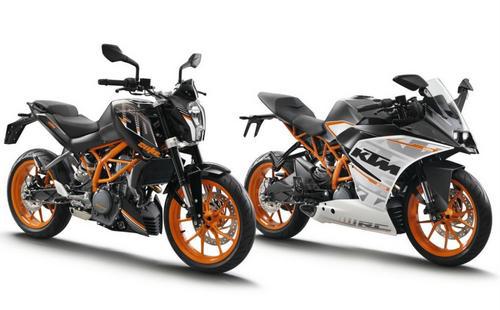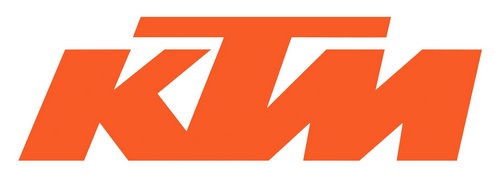The Marketing mix of KTM analyses the 4Ps of KTM, which includes the Product, Price, Place, and Promotion of KTM. KTM-Sportmotorcycle AG is commonly referred to as KTM. It is of Austrian origin and is associated with the automotive industry. KTM was officially founded in 1981. It traces its roots to 1934 when it started its operations but was still an unregistered company. Due to financial difficulties, it had to be split into four organizations in 1992.
Each of them has retained the KTM brand name, but KTM-Sportmotorcycle AG is associated with the actual KTM Company. Bajaj Auto Limited and CROSS Industries AG currently own it. Some of its competitors in the motorcycle sector are as follows
- Yamaha
- Kawasaki
- BMW
- Honda
About KTM
- Type: Motorcycle manufacturer
- Industry: Automotive
- Founded: 1934
- Founders: Hans Trunkenpolz and Ernst Kronreif
- Headquarters: Mattighofen, Austria
- Area served: Worldwide
- Current CEO: Stefan Pierer
- Number of employees: 7,000
- Major products: Motorcycles, bicycles, and sports cars
Table of Contents
KTM Product Strategy
KTM is the manufacturer and producer of motorcycles known for performance and durability. It has an expanded product range and portfolio that includes-
Off-road motorcycles
- Motocross
- Enduro
- Cross-Country
- Kids Bikes
Sport Bikes
- KTM Duke 125
- KTM RC 125
- KTM 390 Duke
- KTM RC 390
- KTM 200 Duke
- KTM RC 200
- KTM 640-690 Duke
- KTM Duke 250
- KTM RC 250
- KTM 990 Super Duke R
- KTM 1290 Super Duke R
- KTM 1190 RC8 sportbike
Super Moto Bikes
- KTM 625 SMC
- KTM 660 SMC
- KTM 640 SMC
- KTM 690 SMC
- KTM 690 SMC R
- KTM 990 SMR
- KTM 990 SMT
Adventure Bikes-
- KTM 690 Enduro
- KTM 690 Enduro R
- KTM 950 Adventure
- KTM 950 Super-Enduro R
- KTM 640 ADV
- KTM 1290 Super Adventure
- KTM 1190 Adventure
Other Bikes
- 450 SX ATV
- 505 SX ATV
- 450 XC ATV
- FREERIDE E-SM
KTM, known for its high-performance motorcycles, offers a diverse product mix that caters to various segments of the motorcycling market. The product mix of KTM in 2023 is as follows (Source)
- Motocross Bikes: These are off-road, competition bikes designed for motocross racing. Models include the KTM SX series, with different engine sizes like the 125 SX, 250 SX-F, and 450 SX-F.
- Enduro Bikes: Designed for long-distance off-road riding, these bikes are equipped with features suitable for harsh terrains. Popular models include the KTM EXC series, like the 250 EXC-F and 300 EXC TPI.
- Adventure Bikes: These are dual-sport motorcycles for both on- and off-road use. The KTM Adventure series includes models like the 390 Adventure, 790 Adventure, and the 1290 Super Adventure.
- Naked Bikes: These are street bikes without fairings, known for their versatility and agility. KTM’s Duke series, including the 125 Duke, 390 Duke, and 790 Duke, falls under this category.
- SuperSport Bikes: Focused on high performance and speed, these bikes are typically used for racing and spirited road riding. The KTM RC series represents this segment, like the RC 125, RC 390, and RC 8C.
- Electric Bikes: KTM also offers electric motorcycles, like the KTM Freeride E-XC, an electric off-road bike.
- Youth Bikes: Targeting younger riders, KTM has a range of smaller bikes like the KTM 50 SX and 65 SX, which are essentially scaled-down versions of their full-sized motocross bikes.
- Travel Bikes: These are designed for long-distance travel, offering comfort, luggage carrying capacity, and long-range performance. A notable model in this category is the KTM 1290 Super Duke GT.
KTM continually updates and expands its product line, introducing new models and technologies to stay competitive in the motorcycle industry.
KTM Place Strategy
KTM is a world-famous company with its headquarters base at Mattighofen in Austria. It joined hands with Indian auto-giants and was able to reap the benefits of the engineering power of its partner, Bajaj. Its international presence has spread to several countries via manufacturing plants and product availability in places like Dubai, Indonesia, Sao Paolo, and New Zealand.
In 2015, KTM announced its decision to invest in a manufacturing plant at Campana in Buenos Aires, Argentina. The company has a widespread and robust distribution network that includes channels like manufacturers, stockists, registered offices, and consumers. KTM has two joint ventures, thirty-one sales subsidiaries, and fourteen hundred independent and authorized dealers in the international market.
KTM’s Place Strategy is as follows:
- Global Dealership Network: KTM has established a widespread network of dealerships across various continents, ensuring accessibility to customers in key markets, including Europe, North America, Asia, and Australia.
- Partnership with Local Distributors: In many countries, KTM collaborates with local distributors to facilitate sales, service, and parts availability, leveraging local market expertise and customer relations.
- Online Presence: KTM enhances the growth of its place strategy through a robust online presence, offering detailed information about its products, e-commerce for apparel and accessories, and dealer locator tools on its website.
- Participation in International Motor Shows: KTM actively participates in major international motor shows and events, such as EICMA in Milan and Intermot in Cologne, to showcase their products and reach potential customers.
- Strategic Location of Manufacturing Units: KTM has strategically located its manufacturing units in Austria and India, allowing for efficient distribution to European markets and cost-effective production for Asian and emerging markets.
KTM Pricing Strategy
KTM are all-terrain and practical bikes with a high demand ratio in the consumer market. State-of-the-art technology and superior handling capabilities have made it a front-runner choice for a biker. Low maintenance and high gas mileage have made KTM vehicles cost-effective buys. The consumer market is now looking forward to upscale bikes and is ready to pay for a luxury 2-wheeler sector. KTM is a premium brand and has adopted a mid-premium pricing policy for its motorcycles. It has recognized the mindset of a customer looking for lifestyle, status, and thrill in one bike and is ready to shed something extra for it. This is why the company has successfully implemented an affordable pricing plan for someone demanding more than a normal commute.
KTM’s pricing strategy reflects a careful blend of market positioning, perceived value, and competitive dynamics, positioning the brand as a premium offering in the motorcycle market. Here are key aspects of their pricing strategy:
- Value-Based Pricing: KTM sets prices based on the perceived value of their motorcycles to consumers. This approach focuses on their bikes’ top quality, unique features, performance, and technological advancements, which appeal to enthusiasts and professional riders, justifying a higher price point.
- Competitive Positioning: KTM strategically prices its products in line with or slightly above its competitors, such as Honda, Yamaha, and BMW. This positioning underscores KTM’s premium brand image while remaining competitive in the market.
- Segmented Pricing: Recognizing the diverse needs of different market segments, KTM employs segmented pricing. This strategy involves varying prices for different models, from lower prices for entry-level bikes like the Duke 125 to high-end models like the 1290 Super Duke R, catering to budget-conscious riders and those seeking top-tier performance.
- Geographic Pricing Strategy: KTM adjusts its prices according to geographic locations, considering local taxes, import duties, and market demand. This approach ensures competitive pricing in different countries while maximizing profitability.
- Dynamic Pricing for New Launches: KTM often adopts a premium pricing strategy for new model launches, capitalizing on the excitement and demand from early adopters. Over time, as the product matures in the market, KTM may adjust the pricing to appeal to a broader customer base.
In summary, KTM’s pricing strategy is a sophisticated mix of understanding customer value perception, maintaining a competitive edge, and adapting to market-specific dynamics, all while at maximum value and upholding its premium brand image.
KTM Promotion Strategy
KTM is a renowned manufacturer of bikes, and its character is reflected in its products and tagline, Ready to Race. It organizes several events to promote safe riding and increase its social presence. The company has used print and social media to promote its products via magazines, billboards, Twitter, and YouTube. In 1974, KTM won motocross racing for the first time with a win from Guennady Moisseev in the Motocross World Championship. It attained success at the Atlas-Rally and Paris-Dakar Rally. In 2003, KTM began supporting and sponsoring road racing, such as the Superbike Competition.
In the 2014 Moto3 Season, it won manufacturers MotoGP title for a third consecutive time. The official colors of KTM are silver, black, and orange. All competition-ready vehicles arrive in orange plastic with KTM branded on the sides to create a powerful and vibrant brand identity.
KTM’s promotion strategy is centered around three key elements:
- Motorsport Sponsorship and Participation: KTM heavily invests in sponsoring and participating in various motorcycle racing events, such as MotoGP, Dakar Rally, and motocross championships, leveraging the excitement and fan base of these sports to enhance brand visibility and appeal.
- Digital Marketing and Social Media Engagement: The company actively utilizes digital marketing channels, including social media platforms, to engage with customers, showcase new models, and promote lifestyle-oriented content that resonates with motorcycle enthusiasts.
- Collaborations and Rider Endorsements: KTM collaborates with influential riders and celebrities in the motorcycling world for endorsements, leveraging their popularity and credibility to promote its products and connect with a wider audience.
Some Recent Video ads and Print ads of KTM are:
Liked this post? Check out the complete series on Marketing Mix

